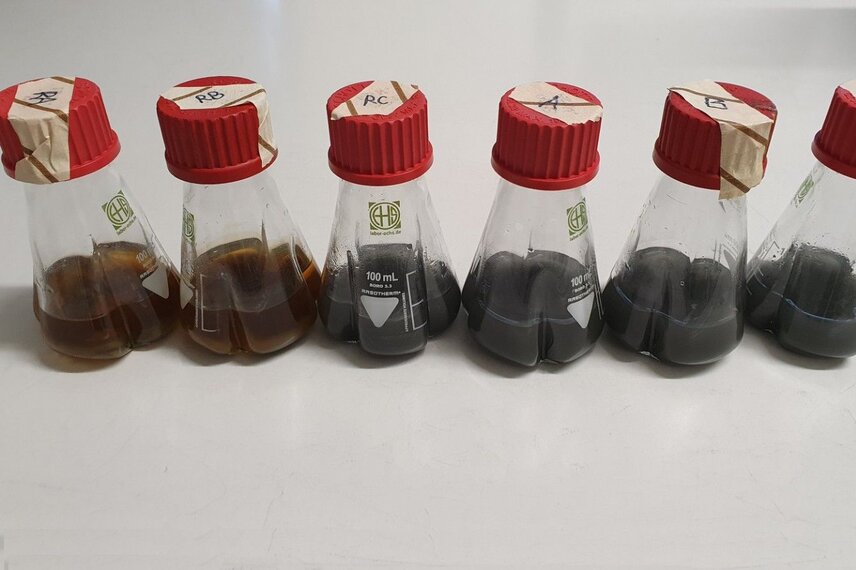
As part of the Fraunhofer project "BioIntElekt" metals should be mobilized with the help of bacteria. At the Fraunhofer FEP, a new process for enhanced microbial ore leaching (bioleaching) is under development and initial successes were achieved.
Researchers are working on solution for the economical consumption of resources, their recycling and the future recovery of new raw material sources, as well as on an environmentally friendly but still demand-oriented extraction worldwide. The extraction of heavy metals from their ores with the help of microorganisms is called microbial ore leaching or bioleaching.

Currently, bioleaching of copper in large-scale production is mostly performed by percolation in stockpiles. The mineral has to be crushed to a particle size of about 1 cm or smaller in two to three crushing stages. Diluted sulfuric acid solution is applied to the heaped material via dripping irrigation or sprinkling and the process has to be repeated until the desired copper concentration is achieved. The overall leaching process may last for several months. To accelerate microbial ore leaching and to apply the process for a more efficient recovery of metals from tailings and waste, an interdisciplinary consortium has formed at Fraunhofer FEP, which has now received internal grant.
Dr. Simone Schopf, group manager of "Biotechnological Processes" at Fraunhofer FEP explains: "We are currently working on a lab-scale technology for the direct integration of an electron beam source into a bioreactor for the treatment of liquids. At the same time, we were able to run initial tests with an existing electron beam plant to prove the feasibility of the technology. Our results suggest that the interaction between electrons and bacteria can lead to stimulation. For example, in preliminary experiments we stimulated bacteria with low electron doses and achieved yields that were approximately 10% higher. The technology will be specifically developed for applications in the life science and environmental technology sectors."
Up to now, the treatment of liquids with electrons has been carried out with very thin liquids films with linear type accelerators. The production of such large linear type accelerators is not a problem. The challenges lie in the miniaturization of the electron beam source and the design of the interface to the bioreactor. However, direct and targeted introduction of the electrons into the liquid entails low energy losses and the cooling effect of the liquid can be used to beneficial effect.
Dr. Michiel Top adds: "Fraunhofer FEP is now closing a technological gap in electron treatment of liquids: with a low-cost, miniaturized electron beam source (low-energy electron emitter) integrated into a stirred bioreactor containing appropriate microorganisms."
Currently, the research focuses on bioleaching for the recovery of raw materials or as a recycling process. In addition to using the process for microbial ore leaching, the scientists also anticipate applications in wastewater treatment, sterilization applications, the food industry and the pharmaceutical industry. The process may also be of interest for the biotechnological production of natural substances or even "green" hydrogen in the future.
As part of the Fraunhofer ElKaWe project, the Fraunhofer Institute for Electron Beam and Plasma Technology FEP has made significant …
Anodic Arc Evaporation: A Key Enabler for Next-Generation Photovoltaics: The EU-funded LUMINOSITY project unites 15 research and industry partners from …
The Kunststoff-Zentrum in Leipzig (KUZ) will be presenting its services as a development partner for plastics technology solutions at the …